In yesterday’s post, I showed results of the photon transfer analysis programs modeling the Nikon D4’s full well capacity and read noise for each ISO setting of interest. Today, I’d like to show you what happens when you attempt something more challenging: modeling the behavior of the ISO adjustment knob as well.
To do this, we separate the read noise into two components, as described earlier. The first is the read noise on the sensor side of the amplifier whose gain is controlled by the ISO knob. I call that the pre-amp read noise, and its units are electrons. The second is the read noise on the ADC side of the amplifier. I call that the post-amp read noise, and its units are ADC LSBs. Let me explain that last unit a bit. Yes, the post-amp read noise is an analog quantity, and we could measure it in volts — actually microvolts — but that wouldn’t mean much to us as photographers. We care about how it makes the digitized result uncertain, and thus it is natural to measure it in the units that we see when we look at the raw files.
Once we’ve performed this mental and programmatic separation, we then tell the program to minimize the sum of the squared error between the measured and modeled cameras by adjusting the full well capacity, the pre-amp read noise, and the post-amp read noise.
If we turn the program loose on the D4 data, we get this:
The raw plane, or raw channel, order for the D4 is RGGB, so you can see that the program says that the red and blue channels have lower FWC than the two green channels, just as in yesterday’s results. I still am unclear about the reason for this, but I suspect that if has something to do with white balance prescaling.
Let’s look at the first green channel and see how well the modeled data matches the measured data. First we’ll look at standard deviation:
Then at SNR:
The match is quite good, indicating that the D4 doesn’t have much in the way of ISO-dependent tricks up its sleeve.
Now the standard deviations in the red channel:
and the SNRs in that channel:
Note that the red channel is missing the upper stop or so of data. That’s because I used a D55 light source, and the red an blue channels are substantially down from the green ones with that input spectrum.
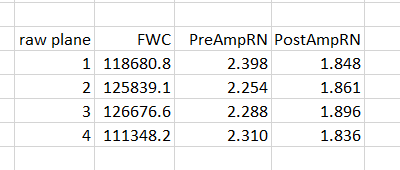
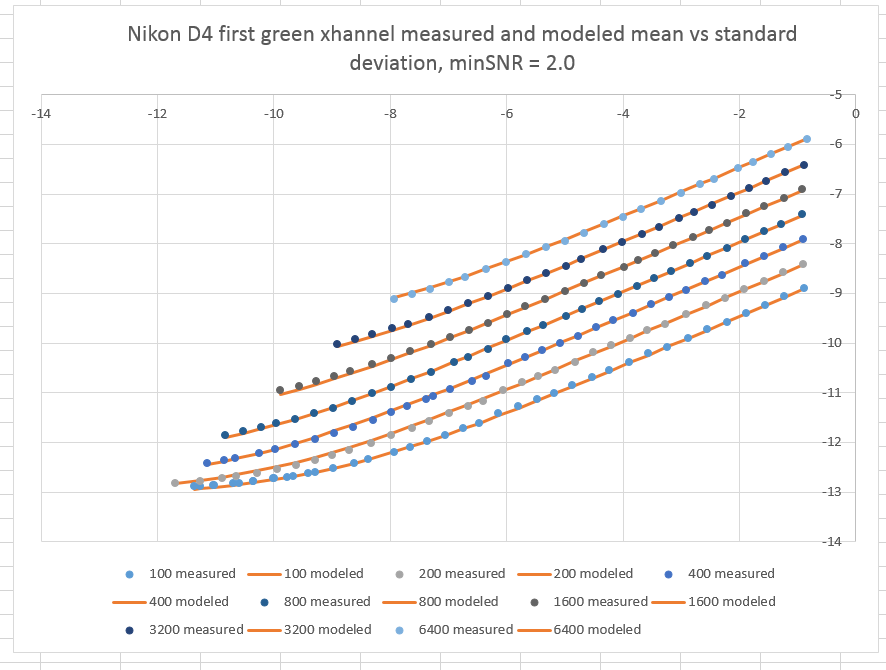
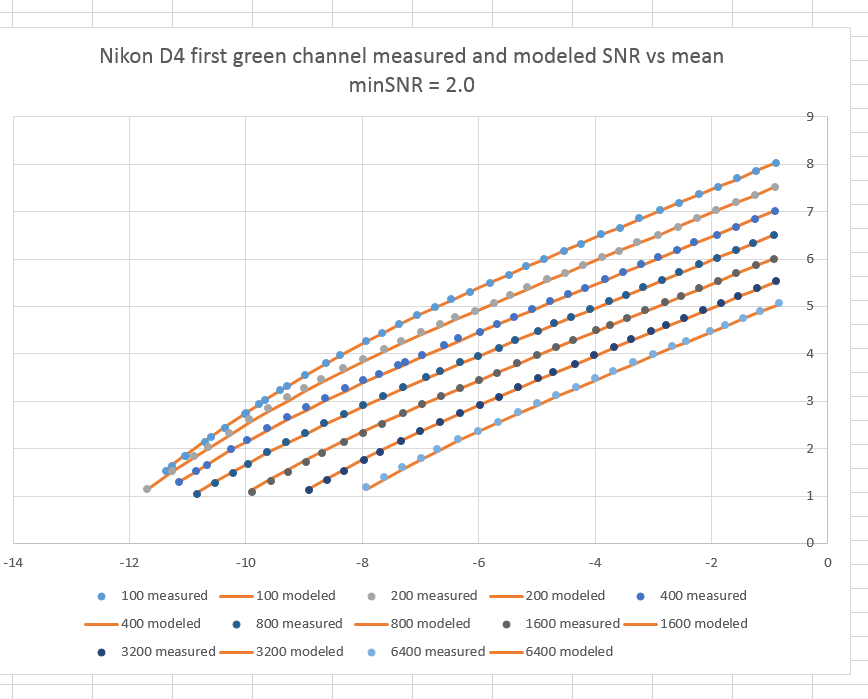
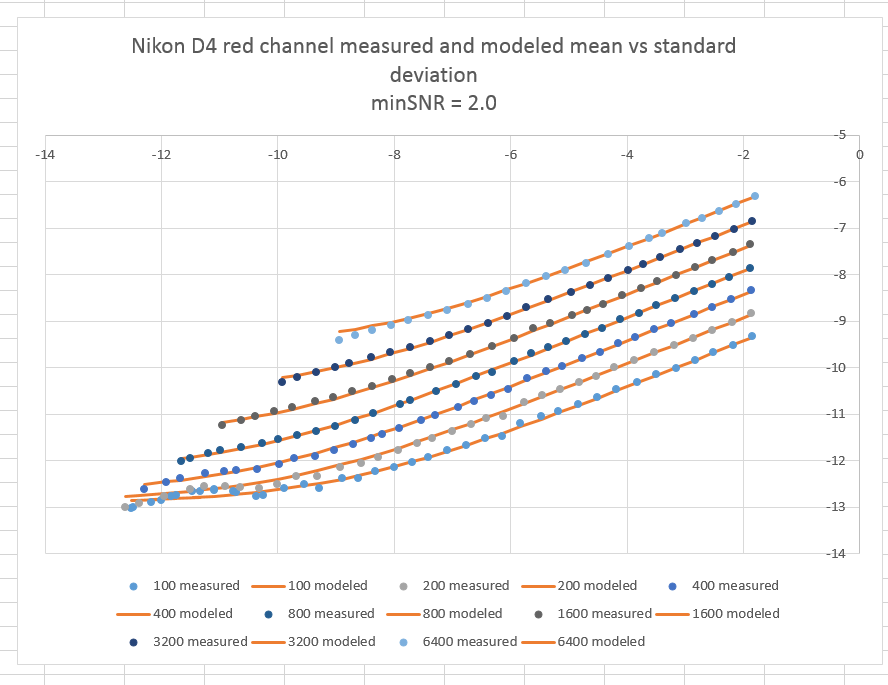
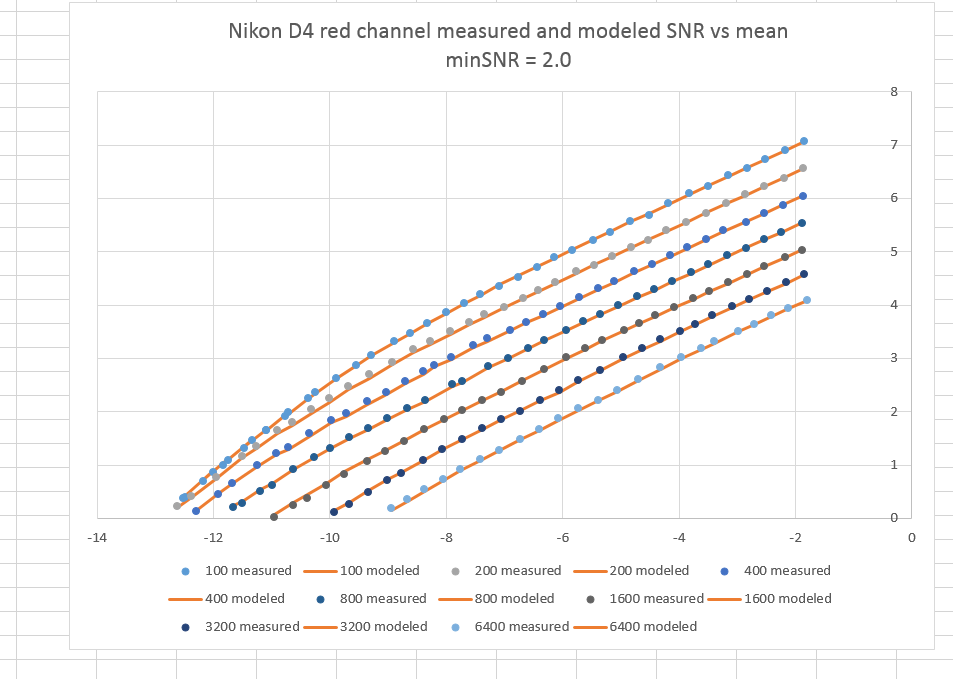
Leave a Reply